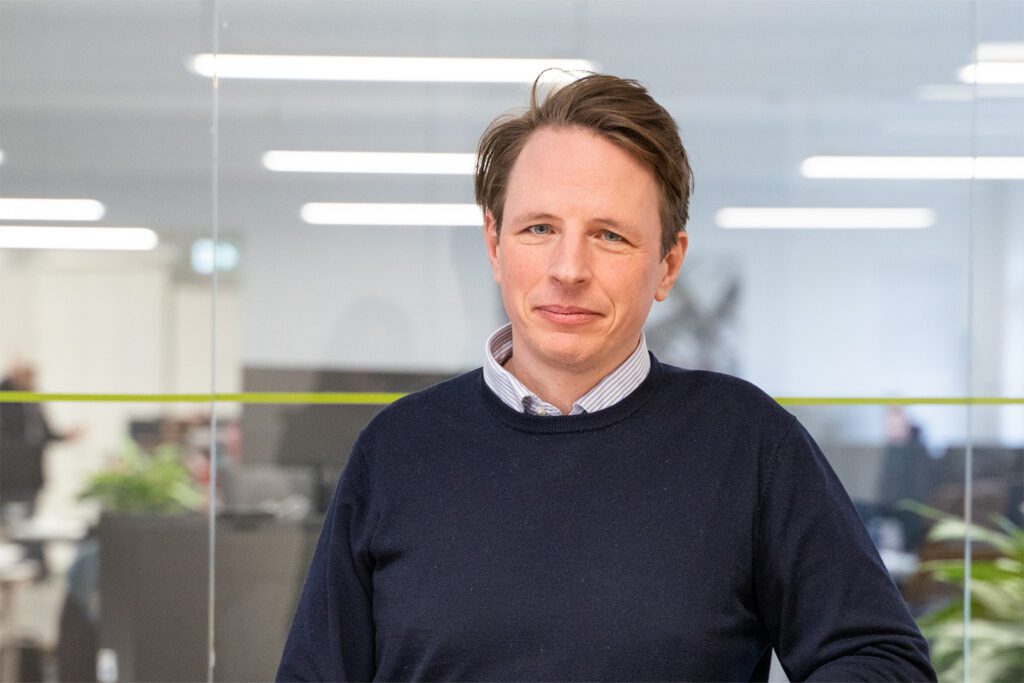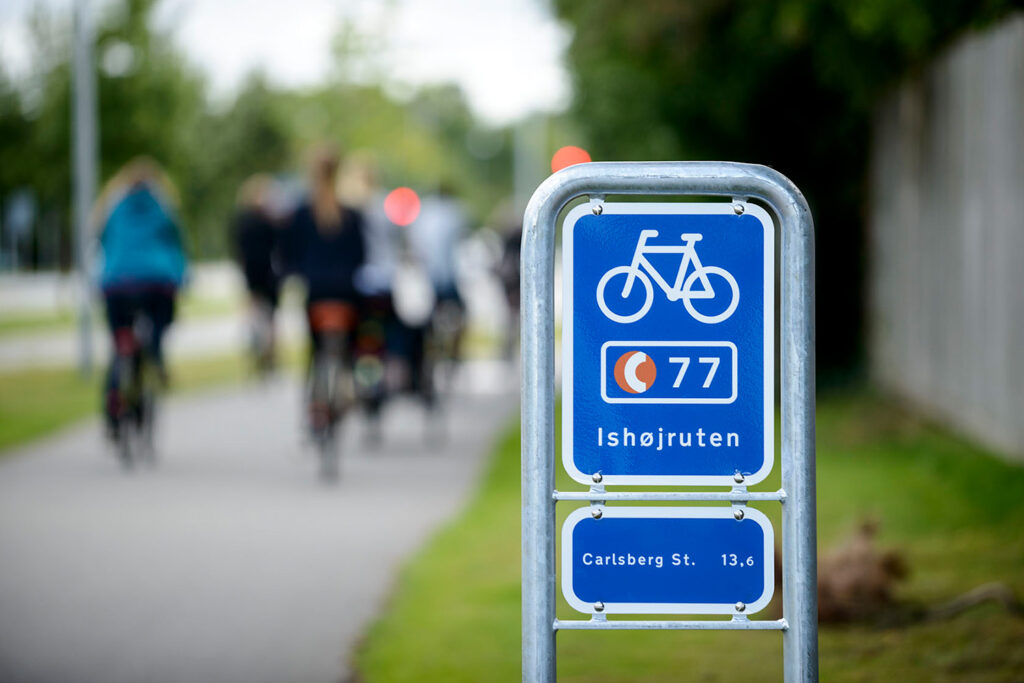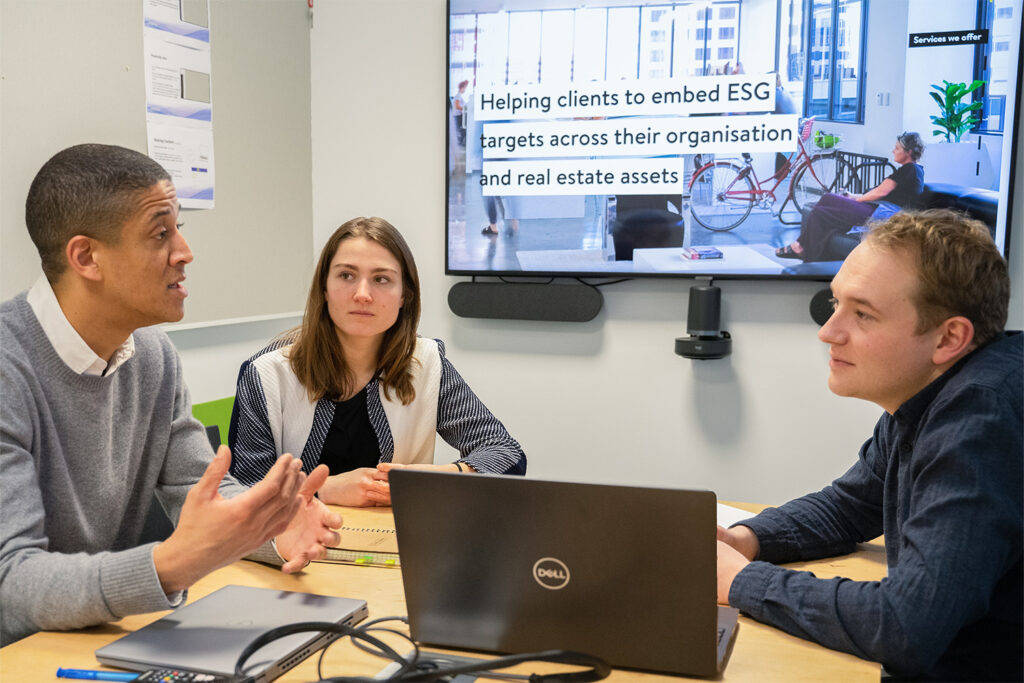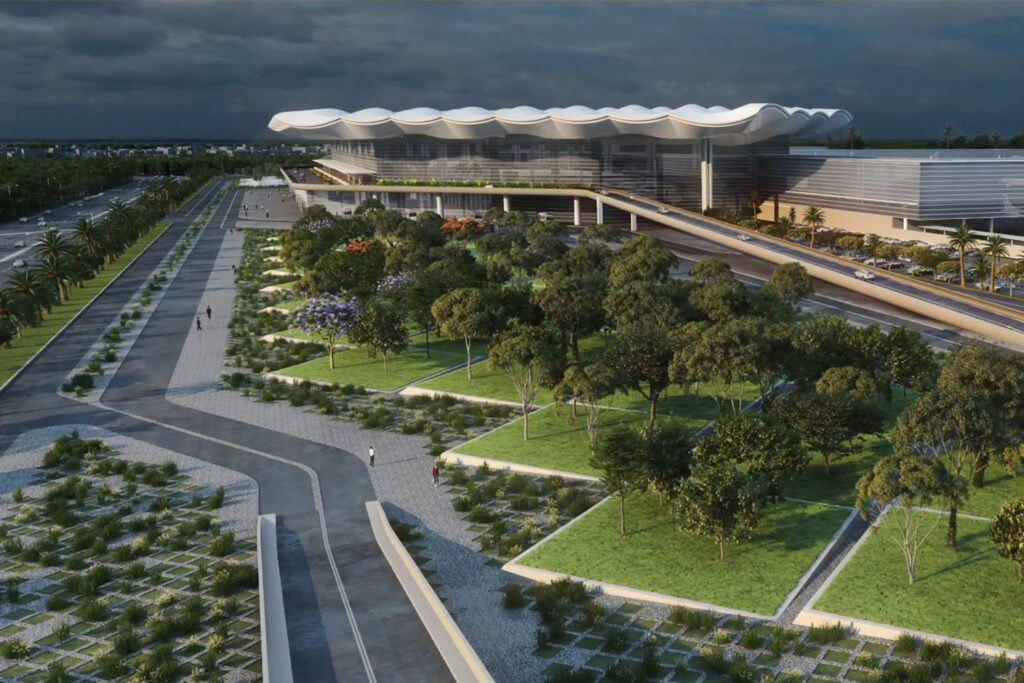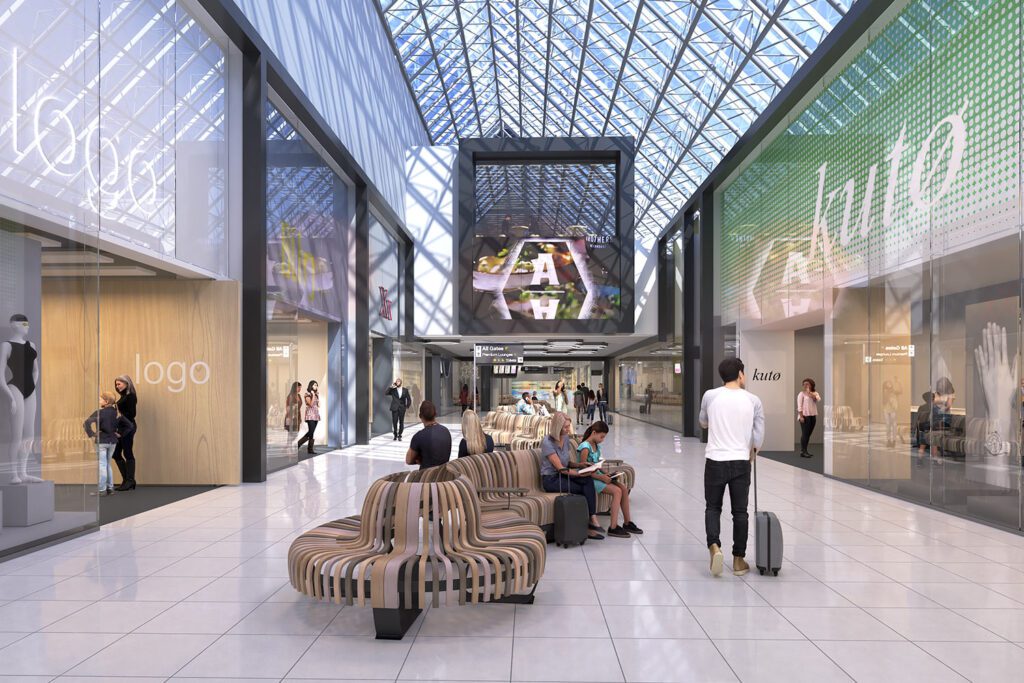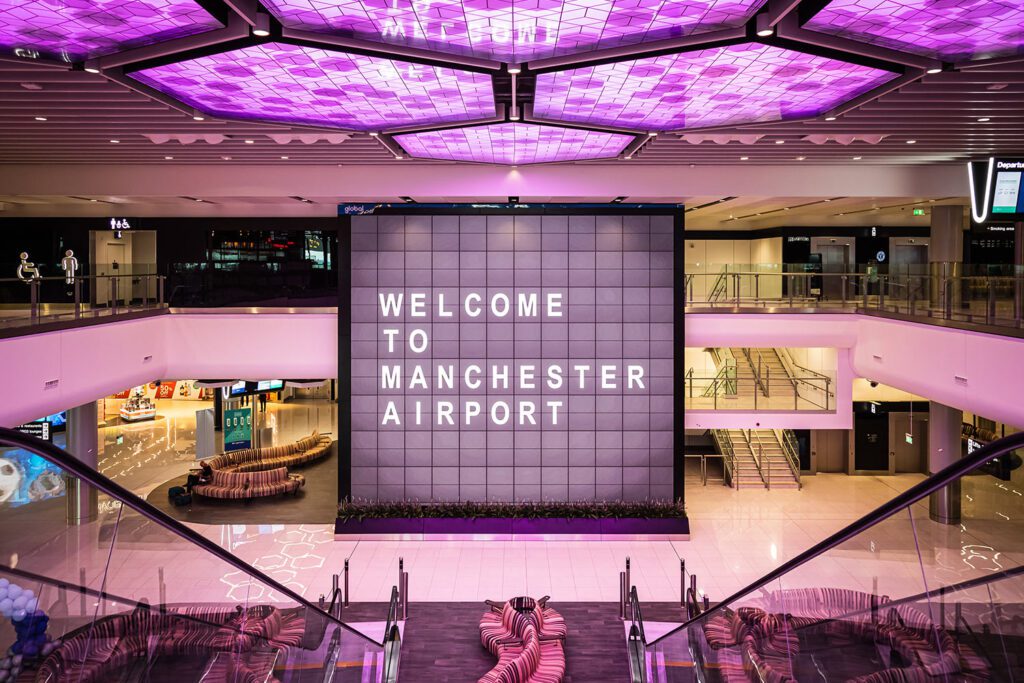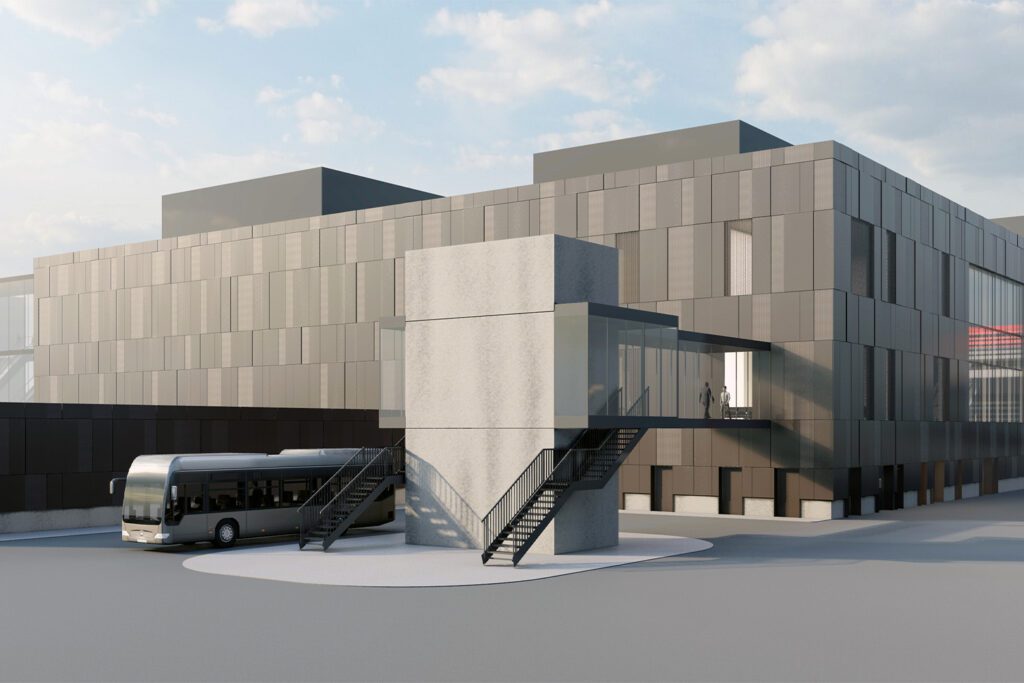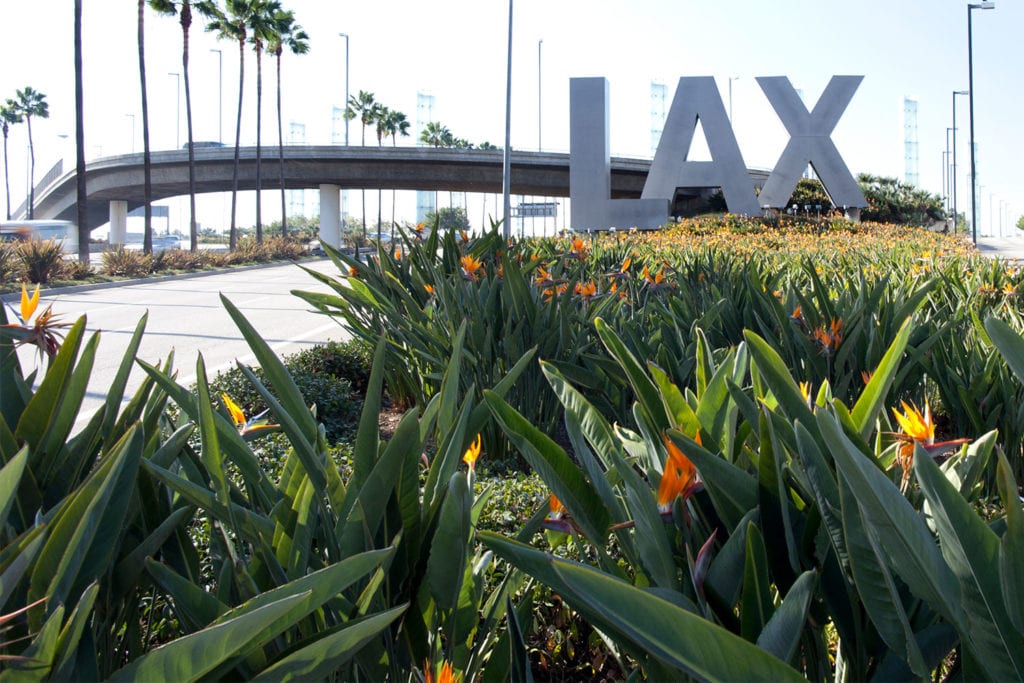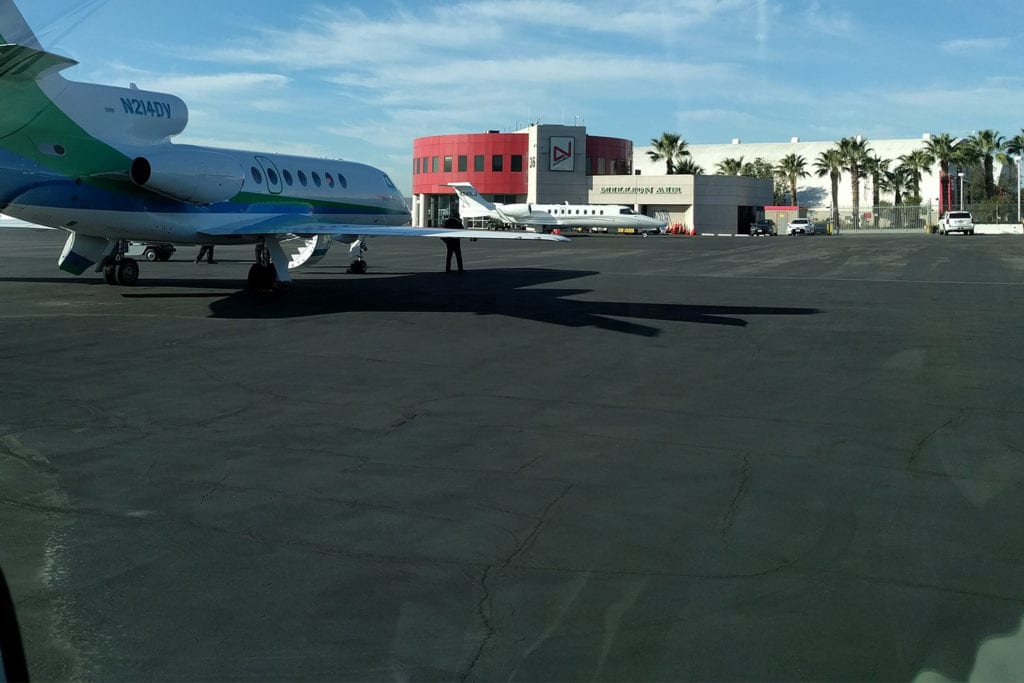
K64 – Keflavík Airport Area Masterplan
Keflavík, Iceland
Project details
Client
Kadeco (Keflavík Airport Development Company)
Architect
KCAP
Collaborator
KCAP, WSP, FELIXX, MIC-HUB, VSO Consulting, Buck Consultants International, Base Design, Maurits Schaafsma, and Kanon Arkitektar.
Duration
2021 – ongoing
Services provided by Buro Happold
Located 50km away from the capital Reykjavík, the Suðurnes peninsula, the site of Keflavík International Airport is Iceland’s most emblematic gateway. Sitting at the crossroads of Europe and North America, home to the Reykjanes UNESCO Global Geopark, the airport area is exceptionally well suited to become one of the leading developments for sustainable innovation in the aviation, energy and technology sectors.
Iceland’s international airport has developed a Major Development Plan (MDP), which will transform the airport’s capabilities over the next two decades. By 2030, the airport aims to expand its facilities, relocating baggage scanning, adding a new east pier and updating the passenger terminal. By 2040, the MDP will see the further extension of the passenger terminal building which will allow for significantly more flights each day. Alongside this, the Keflavík Airport Area Masterplan (K64) proposes an incremental strategy to steer the sustainable long-term transformation of the Suðurnes peninsula.
Challenge
Buro Happold has been engaged to provide sustainability consultancy around climate and aviation mitigation and a regional energy strategy, working as part of a wider masterplan design team, led by KCAP. In a parallel project, our experts are also supporting the airport’s MDP, bringing digital expertise as an IM (Information Management) and BIM (Building Information Modelling) lead to the digital coordination of the first phase of the 20,000m² expansion of the Leif Erikson Air Terminal.
K64 proposes an incremental strategy to steer the long-term transformation of the Suðurnes peninsula – to set the path for sustainable growth and focus areas for development that are defined to mutually reinforce economic activities and local communities.
Codenamed K64 – because it straddles the 64th parallel north – the Keflavík Airport Area Masterplan aims to be a catalyst for innovating the Icelandic economy. It’s a grand project designed to develop the full potential of this unique territory and explore untapped opportunities in relation to the global challenges of the future. Building on its privileged position at the intersection of the northern Atlantic routes and banking on the Icelandic progressive way of thinking, K64 aims to converge influxes of people, assets and technologies toward a forward-looking environment, specifically designed to foster partnership, creativity and knowledge.

Solution
The project aims to ensure the aptly named Gateway to Iceland traces a welcoming journey starting from the commercial and visitor amenities of the airport forecourt all the way up to the Aðalgata area, a nodal point marking the entrance to the city of Reykjanesbær. Together with the adjacent Diamond Gate logistics hub, Aðalgata is forming a highly dynamic district mixing residential, community and research and development (R&D) programmes.
On the southern edge of the airport, Ásbrú is planned to become a campus-like area, fostering aviation activities and R&D, start-up programmes, light industries and most of all an ambitious residential densification, which will turn the former NATO settlement into a neighbourhood in its own right, a modern take on the cosy, lively village.

North of Reykjanesbær, the focus area of Helguvík will do the heavy lifting in terms of eco-industrial development, converting the existing port and manufacturing infrastructures to create a circular-economy environment comprising a construction hub and a Sustainable Aviation Fuel (SAF) facility, with the potential to spearhead energy transition in Iceland and beyond.
The vast landscape that currently separates the clusters will grow into a uniting peninsula park. The landscape strategy takes the concept of afforestation (new forest creation) as its basic premise to mitigate the harsh climate and create comfortable conditions that allow for outdoor activities and cycling networks. Increased public transport services – including a peninsula wide demand-responsive transport (DRT) – and resilient transport networks improve the local connectivity between the urban nodes. A high-speed connection to Reykjavík through a KRL rail line embeds the archipelago into the capital’s mobility system.
A Sustainability Framework has been developed to provide an overarching structure that aligns sustainability principles with the cross-cutting themes (energy, mobility, buildings). It follows a deep and broad understanding of sustainability, and is used to inform five core documents: Energy Guidelines, Sustainability & Low carbon design guidelines, Resilience and Climate Adaptation Guidelines and Smart Airport and Innovations Guidelines.
Buro Happold energy experts advised an energy roadmap that has the potential to transform the Keflavík Airport Area into a “lighthouse region” for the development of sustainable energy solutions. Since the planned commercial and industrial activities will require a large amount of green, low-cost energy and the existing energy resources on the peninsula – two geothermal power plants – are limited in their expansion potential (in addition to an insufficient grid infrastructure), the energy framework suggests additional sustainable energy sources, which support the decarbonisation of the transport and aviation sectors and an improved grid infrastructure.
Currently 85% of the country’s energy supply comes from renewables (geothermal and hydropower). These sources have led to a highly sustainable supply of electric energy and heating for private, commercial and industrial use. For decarbonising the aviation sector, the energy strategy seeks to use the region’s resources (cheap access to water, CO2 and green electricity) to produce sustainable aviation fuel, synthetic kerosene, via hydrogen production.
The energy strategy strives for diversification and decarbonisation of local energy systems, while generating economic development with innovative solutions for the mid to long term. These spatial strategies are underpinned by economic strategies for industries, knowledge and cargo development to create a resilient and diverse industrial base, develop business opportunities for green and high-tech activities, and ultimately create an international competitive business destination.
The masterplan went through an intense participatory process with a large group of stakeholders, and has political support from both the local and national government.

Value
To sustain the K64 initiative over time, urban design, landscape and mobility strategies intertwine in an ecosystem that connects, protects, and enhances while supporting activity and population and employment growth. It fosters stronger synergies between the economic and social fabrics of the peninsula. The urban framework is preventing sprawl by proposing compact urban development anchored on the existing build-up context. It establishes a distinct spatial logic for airport-related activities around the airport, while it strives for the mixing of uses as a development principle.
The energy roadmap increases energy security on the peninsula, and explores innovative ways of using renewable energy, utilising the unique synergies in the Suðurnes region and strengthens the competitive advantages of the international aviation hub.
Setting the path for a long-term sustainable development will enable the transformation of the airport to act as a catalyst to innovate the Icelandic economy.
We have always had a very fruitful and constructive collaboration with Buro Happold, they are the kind of experts we need to solve questions. They approach each project giving the best they can including adding things we had not thought of and can provide people with expertise to deliver this.
Ute Schneider, Partner, KCAP

Awards
2023
THE PLAN Award – Transportation category




